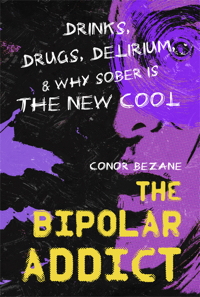 Kicking a drug or alcohol habit is one of the most challenging struggles a person can face. Rather than the traditional 28 days of rehab, there’s another approach that may help. Magnetic pulses to the brain may curb addiction, according to one Italian scientist.
Kicking a drug or alcohol habit is one of the most challenging struggles a person can face. Rather than the traditional 28 days of rehab, there’s another approach that may help. Magnetic pulses to the brain may curb addiction, according to one Italian scientist.
The treatment, called transcranial magnetic stimulation, or TMS, involves a coil placed near the scalp. Electric pulses create a magnetic field, which results in electric currents in small portions of the brain’s cortex.
Dr. Luigi Gallimberti has used this method to treat more than 300 addicts.
Previously, TMS has been used mostly for depression. It is only now that it is being looked at as a treatment for drug and alcohol addiction. For the bipolar among us, it should be noted that hypomania is a potential side effect.
There are two types of TMS: cold circuit and hot circuit. For cold circuit, bursts of electrical stimulation are delivered every second for three or four seconds and then resuming nine or ten seconds later. This cycle of pulses happens for 200 seconds. It is thought that these blasts of stimulation in the dorsolateral pre-frontal cortex — the front part of the brain associated with motor skills, organization, and regulation — can result in reduced drug cravings.
If the same treatment is applied to an area of the brain called the vetromedial pre-frontal cortex, the pulses are thought to decrease cravings.
This might sound like electroconvulsive therapy (ECT), but it is not. TMS is also used for those suffering from depression who are not responding to antidepressants. It is believed there are virtually no side effects and the treatment has been cleared by the FDA.
The National Institute of Psychiatry in Mexico City, The Medical University of South Carolina, and Baltimore’s National Institute on Drug Abuse are all investigating the efficacy of TMS at curbing addiction.







